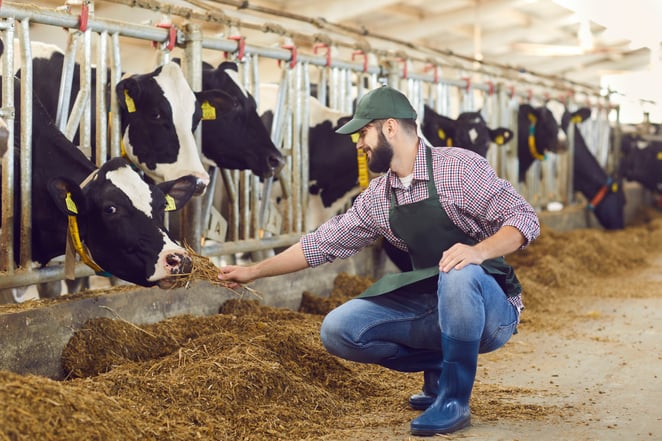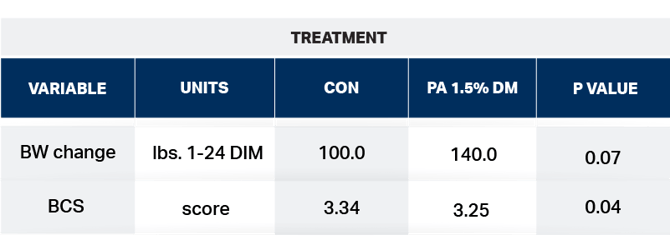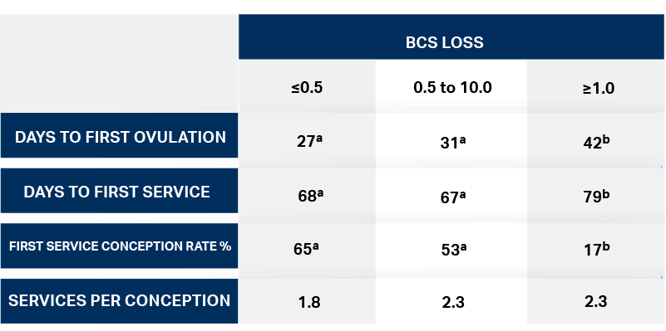HOW DO YOU VALUE YOUR BYPASS FAT?
Posted by Dr. Jim Lofton on Mar 15, 2022 12:17:19 PM

During the last decade, several published research trials have focused on determining the optimal fatty acid composition of bypass fats. Nutritionists and dairymen alike have been adding bypass fats to the diets of their lactating cows with little attention being paid to their individual fatty acid (FA) composition. Published research has revealed to us that there is substantial difference in the metabolism and utilization of the three primary FA in most bypass fat products, palmitic (PA), stearic (SA), and oleic acid (OA).
Characteristics of a bypass fat should include the following:
- No negative effects on rumen fermentation
- Improve milk yield and/or milk components
- Maintain or improve body weight gain and body condition score (BCS) in early lactation
- And most importantly----no negative effect on dry matter intake (DMI)
The three major bypass fat categories being recommended by nutritionists today include calcium salts of fatty acids (CAS), highly enriched palmitic acid prills (PA), and highly saturated fatty acid prills containing stearic, palmitic, and oleic acids (EB). There have been several reviews comparing these 3 bypass fat categories regarding their milk yield (MY), DMI and NEL intake, and milk components (Chilliard 1993, Allen 2000, Raibee et al. 2013, Boerman and Lock 2014, and Sellers et al. 2017. All of the meta-analyses show that CAS significantly reduce DMI. Sellers et al. 2017 showed both CAS and PA resulted in significant reductions in DMI. At the time of the earlier meta-analyses, there were few PA studies to include in the studies.
PA has been shown in several trials to increase milk fat (MF) % and MF yield. However, these trials were short in duration, 2-4 weeks, and little was discovered about long-term effects feeding highly enriched palmitic acid may have. An early lactation trial (de Souza and Lock 2019) revealed that fresh cows fed PA supplement lost 40 lb. more body weight in the first 25 days of lactation (P=0.07) as well as decreased BCS (P=0.04) than the non-fat control diet (Table 1). This is an unintended consequence of feeding PA in early lactation.
Table 1. The effects of PA fed to fresh cows on body weight loss and BCS change (*adapted from de Souza and Lock 2019)

McFadden 2017 reported that PA fed cows have increased ceramide concentrations in blood and liver tissue. Increased ceramide synthesis increases insulin resistance leading to increased body weight loss, plasma NEFA, and liver fat accumulation. This was the first indication of an unintentional consequences feeding PA to fresh cows. Other bypass fat supplements have been fed in a similar fresh cow study by Piantoni et al., 2015 using EB. EB is a mostly saturated bypass fat source which approximately contains 35% PA, 50% SA, and 8% OA. They found that fresh cows lost less body weight (P=0.02) and increased BCS (P=0.03) when fed Energy Booster 100 whether included in a high NDF (26%) or low NDF (20%) diet when compared to control. Close inspection of these trials indicates that there is a C18 component that is necessary for proper metabolism and utilization of FA. Results are shown on Table 2.
Table 2. The effects of feeding Energy Booster 100 to fresh cows 0-29 DIM fed low and high NDF diets. (adapted from Piantoni et al., 2019 JDS)

As table 2 illustrates, whether a high fNDF or a low fNDF diet is fed, adding EB 100 reduces body weight loss and BCS loss in fresh cows. Part of the response is due to the C18 content (SA and OA) in the bypass fat supplement. The other part of the response is due to the significant increase in DMI. Since OA is 70-75% biohydrogenated in the rumen, the SA reaching the duodenum is likely the causative agent aiding in improving DMI and sparing glucose for production of milk and components (Loften et al., 2014).
The importance of reducing weight loss and lower BCS scores in the first few weeks after calving is mostly overlooked. Smith and Butler 1989 reported that increasing negative energy balance in the first few weeks in resulted in negative reproductive parameters as illustrated in Table 3.
Table 3. The effects of body weight loss and reduced BCS in fresh cows on reproductive parameters (Adapted from Butler and Smith 1989)

In a previous study, Butler et al. 1981, reported that first ovulation occurred 10 days after the most negative energy balance occurred during peak of lactation. Energy balance was still negative but improving. Other researchers have found similar relationships with BCS and reproductive parameters as listed here:
- -48% (65 vs 17%) with >1-unit BCS loss (Butler and Smith, 1989)
- -17.25% with 0.40-unit BC loss (Domecq et al., 1997)
- -20.13% with 0.80-unit BCS loss (Domecq et al., 1997)
- -4.5% with >1-unit BCS loss (Lopez-Gatius et al., 2003)
- -9% with a 1-unit BCS loss (Pryce et al., 2001)
It appears from these published studies that a more negative energy balance in the first few weeks of lactation results in increased body weight loss and reduced BCS. This negatively affects reproductive parameters. Maintaining DMI in early lactation is probably the most significant characteristic a bypass fat can deliver. Researchers have tried to determine the cause of reduced DMI when comparing bypass fat sources. Choi and Palmquist 1996 found that increasing CAS in the diet of lactating cows resulted in reduced DMI. They found that CAS containing palmitic and oleic acids increased plasma cholesystokinin (CCK) . Meals rich in fat and protein are particularly effective in elevating plasma CCK. Gut hormones are secreted into blood from epithelial cells located in the intestinal mucosa and result reduced gastric emptying and possibly reduced intestinal contractions. Published studies with lactating cows has shown bypass fats rich in palmitic and/or oleic acids increase plasma CCK concentrations as well as other gut hormones that may regulate satiety in lactating cows (Relling and Reynolds 2007, Bradford et al 2008, and Piantoni et al 2014). EB has not been shown to reduce DMI in the many meta-analyses or significantly increase CCK. One explanation is that the stearic acid provided by the bypass fat mitigates the effects of palmitic and oleic acid on CCK. Recent trials (Piantoni et al. 2015, Boerman et al. 2017, and Shepardson and Harvatine 2021) all reported higher DMI when stearic acid was increased in the diet.
It appears that maintaining or improving DMI in early lactation may be the most important characteristic that a bypass fat can offer. Improved reproductive parameters may be the most significant benefit a bypass fat can deliver beyond the improvements in MY and milk components. Milk Specialties Global has developed a handy app that can illustrate how DMI comparisons of the three main bypass fats affects MY, BF%, and body weight gain at your feeding rate. Check with your Milk Specialties Global representative and determine the value of your bypass fat.
References available upon request.
Topics: ANIMAL NUTRITION
